If you've ever wondered why you're so tired even when you're getting a full night's rest, you might be low on iron.
Iron is an essential mineral necessary for your body to make red blood cells. Specifically, iron is a component of hemoglobin, the protein necessary for transporting oxygen to cells and for transporting carbon dioxide out of cells. This is why when you are iron-deficient, your blood cells are unable to carry oxygen around the body and you'll likely feel very tired and lightheaded. For children, iron is also important for growth and healthy brain development.
According to a recent article in The Journal of Medicine, the reduction in consumption of iron-rich foods has likely led to an increase in iron-deficiency and related health consequences in the U.S.
if you’re low in iron you might feel fatigued and the last thing you’ll want to do is cook from scratch. Instead of ordering take out, prep a batch or iron-rich foods that are easy to reheat and delicious. Your future self will thank you.
To make sure you’re getting the iron you need, we’ve compiled a list of the best dietary iron sources and recipes that you can freeze to make sure you’re providing your body with the nutrients it needs. Not only will you get your daily dose of iron, you’ll do it in a budget-friendly way when you batch cook and freeze these iron-rich recipes in your Souper Cubes.
Recommended Dietary Allowance (RDA) for Iron
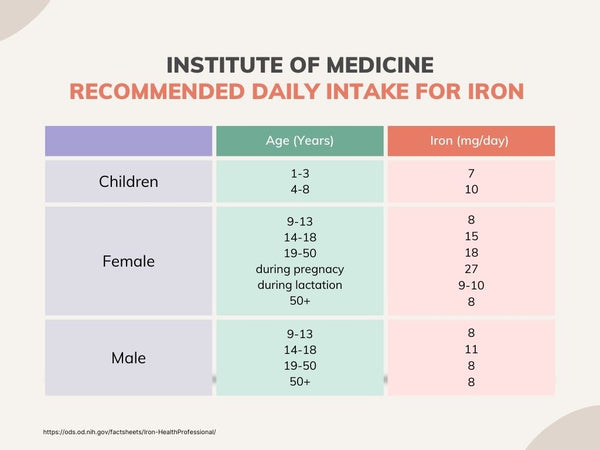
The Recommended Dietary Allowance (RDA) for iron depends on your age and sex. Women during childbearing years need more to accommodate for menstruation, pregnancy, and lactation.
Heme vs. Non-Heme Iron
When we get iron from food, it comes in one of two forms: heme or non-heme iron. Heme iron is found in animal sources, such as red meat, poultry, and fish. Non-heme iron is found in plant sources like leafy greens, nuts, seeds, whole grains and fortified cereals. Because many animals also consume plants, animal sources can also contain non-heme iron. Supplements can be either heme or non-heme iron.
Amount of Iron in Animal Foods

Amount of Iron in Plant-Based Foods

*Breakfast cereals that have 100% of your daily value of iron may come in different serving sizes, so be sure to check the label.
How Your Freezer Can Help You Get More Iron
When you’re tired and busy from the day, cooking can seem like a chore. Prep for those days and nights by having nutrient-dense meals already in your freezer already portioned out for you.
The best sources of iron, meat, poultry, and fish are often more expensive than vegetables and grains, so buying in larger quantities is a cost-savings way to make sure you get affordable, quality sources of iron. However, having a freezer full of raw protein doesn't lead to a fast dinner. By prepping your protein into individual portions, such as cooking 5 pounds of cubed beef into a beef stew then freezing it in 1 cup and 2 cup portions, you can have a budget-friendly, iron-rich dinner ready in minutes.
Souper Cubes allow you to freeze your meals in ½-cup, 1 cup, and 2 cup portions so you only defrost what you want, when you want it.
If you're new to freezer meal prep, check out this Ultimate Guide to Freezer Meal Prep. It has everything you need to know from what you can freeze, how to freeze, and how to defrost your food.
Freezer-Friendly Recipes with Iron
The best way to make sure you're getting the iron you need isn't with supplements, it's by eating foods that are naturally high in iron. To help, we've compiled a list of our favorite iron-rich recipes that you can make in batches and freeze. By having a freezer full of delicious food that also happens to be high in iron, you'll make sure you're giving your body the nutrients it needs.
Beef & Potato Stew - 5mg iron per 1½ cup serving

(recipe and photo: EatingWell.com)
Soups and stews get even better the day after making them so it's only natural for them to be perfect for the freezer. This classic Beef & Potato Stew loaded with iron-rich beef and potatoes is easy enough for a weeknight but also impressive enough for company. Serve it with hunk of crusty bread to sop up all the delicious sauce.
How to Freeze: freeze the stew in 1 cup and 2 cup portions.
How to Reheat: place the stew in a microwave-safe bowl and cook in the microwave on high in 1 minute intervals, stirring occasionally, until hot. Or place the stew in a small pot on the stove and add a splash of water. Reheat over medium heat, stirring occasionally, until hot.
Oyster Stew - 6mg iron per 1⅓ cup serving
 (recipe and photo: EatingWell.com)
(recipe and photo: EatingWell.com)
Similar to clam chowder, this oyster stew uses bottle clam juice, potatoes, and cream but instead of clams, you use shucked oysters. Clams are also a good source of iron so feel free to use those, or both, to be sure you’re getting a good dose of iron. Contrary to what some will tell you, this dairy-based soup freezes and reheats beautifully.
How to Freeze: freeze the stew in 1 cup and 2 cup portions.
How to Reheat: place the stew in a microwave-safe bowl and cook in the microwave on high in 1 minute intervals, stirring occasionally, until hot. Or place the stew in a small pot on the stove and add a splash of water. Reheat over medium heat, stirring occasionally, until hot.
Vegan Lentil Stew - 8mg iron per 2 cup serving

(recipe and photo: EatingWell.com)
The lentils, leeks, and kale in this lentil stew give it a whopping 8mg of iron per serving. With miso and tomato paste, it’s also incredibly savory. Make a big batch and freeze it in portions anytime you need an incredibly nutritious soup.
How to Freeze: freeze the stew in 1 cup and 2 cup portions.
How to Reheat: place the stew in a microwave-safe bowl and cook in the microwave on high in 1 minute intervals, stirring occasionally, until hot. Or place the stew in a small pot on the stove and add a splash of water. Reheat over medium heat, stirring occasionally, until hot.
Slow Cooker White Bean, Spinach & Chicken Sausage Stew - 6mg iron per 1⅓ cup serving

(recipe and photo: EatingWell.com)
White beans, spinach, and chicken sausage simmer together for hours in the slow cooker to make this hearty, iron-rich stew. We like to serve it with crusty bread but it’s also great alongside a light salad.
How to Freeze: freeze the stew in 1 cup and 2 cup portions.
How to Reheat: place the stew in a microwave-safe bowl and cook in the microwave on high in 1 minute intervals, stirring occasionally, until hot. Or place the stew in a small pot on the stove and add a splash of water. Reheat over medium heat, stirring occasionally, until hot.
Vegetarian Potato & Kale Soup - 2 mg iron per 2 cup serving

(recipe and photo: EatingWell.com)
Kale, parsnips, and potatoes give this vegetarian potato and kale soup a boost of plant-based iron. If you’d like to make the soup vegan, swap the heavy cream for coconut cream and the cheese for nutritional yeast.
How to Freeze: freeze the soup in 1 cup and 2 cup portions.
How to Reheat: place the frozen soup in a microwave-safe bowl and cook in the microwave on high in 1 minute intervals, stirring occasionally, until hot. Or place the soup in a small pot on the stove and add a splash of water. Reheat over medium heat, stirring occasionally, until hot.
Beef & Bean Chili Verde - 5mg iron per 1½ cup serving

(recipe and photo: EatingWell.com)
Chili verde is usually made with pork but in this version, lean beef is used instead giving it a boost of heme iron. To make it a weeknight meal, this recipe also opts for store-bought salsa instead of having to husk tomatillos. Serve it brown rice for an additional boost of iron and fiber.
How to Freeze: freeze the chili verde in 1 cup and 2 cup portions.
How to Reheat: place the chili verde in a microwave-safe bowl and cook in the microwave on high in 1 minute intervals, stirring occasionally, until hot. Or place the chili verde in a small pot on the stove and add a splash of water. Reheat over medium heat, stirring occasionally, until hot.
Cumin Chicken & Chickpea Stew - 3mg iron per 1¼ cup serving

(recipe and photo: EatingWell.com)
This chicken stew recipe calls for chicken breasts but if you’d like an extra boost of iron, opt for thighs instead. Dark meat contains more heme iron than white meat, and that goes for turkey as well. Serve this stew with brown rice or couscous and chopped fresh herbs.
How to Freeze: freeze the stew in 1 cup and 2 cup portions. You can even freeze with the rice or couscous on the bottom so you have a complete meal when you reheat.
How to Reheat: place the stew in a microwave-safe bowl and cook in the microwave on high in 1 minute intervals, stirring occasionally, until hot. Or place the stew in a small pot on the stove and add a splash of water. Reheat over medium heat, stirring occasionally, until hot.
Shrimp Fried Rice - 3mg iron per 2 cup serving

(recipe and photo: EatingWell.com)
This super-easy, shrimp fried rice uses instant brown rice but if you have any leftover rice, use it instead. Cold, slightly dried out rice makes for the best fried rice because it absorbs the sauce better. Classic fried rice uses oyster sauce or soy sauce but this version gets a bit of sweetness from the addition of hoisin. Be sure to make a double batch so you can keep it in the freezer anytime a takeout Chinese craving hits.
How to Freeze: freeze the fried rice in 1 cup and 2 cup portions.
How to Reheat: place the fried rice in a microwave-safe bowl and cook in the microwave on high in 1 minute intervals, stirring occasionally, until hot. Or place the fried rice in a small pot on the stove and add a splash of water. Reheat over medium heat, stirring occasionally, until hot.

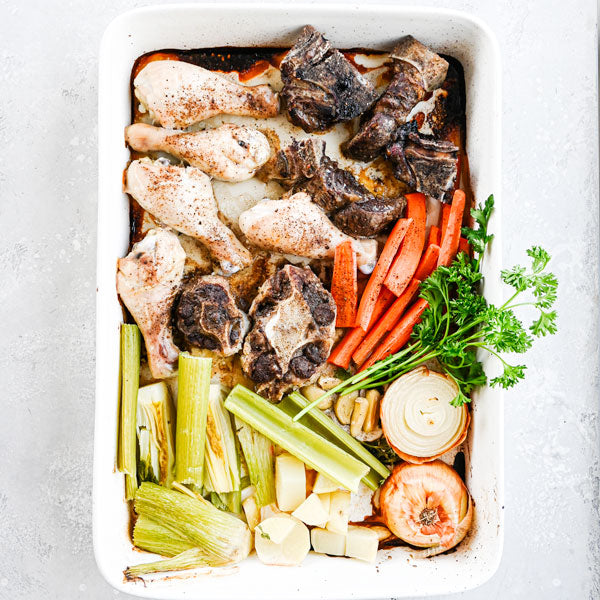
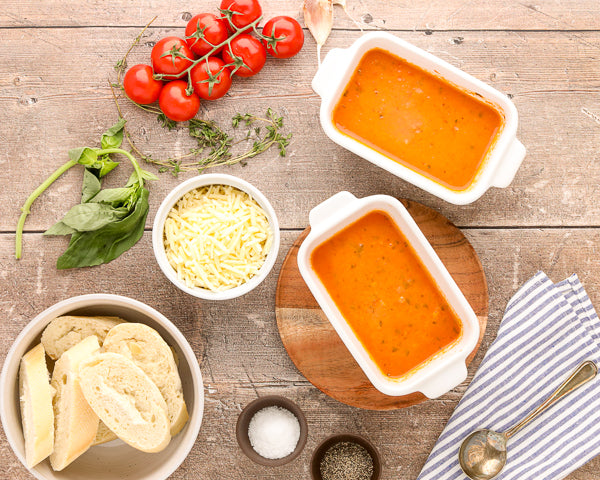
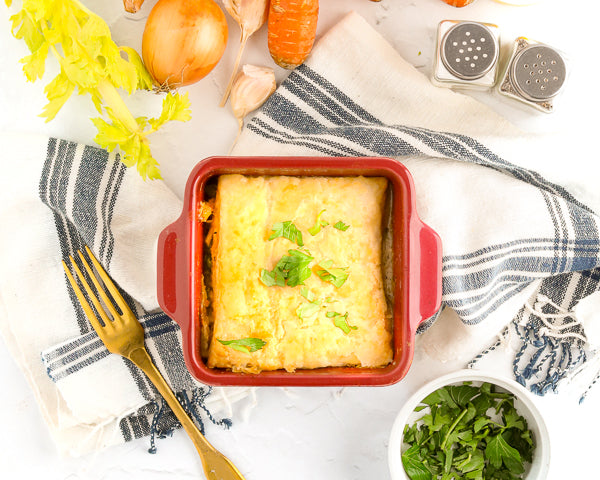
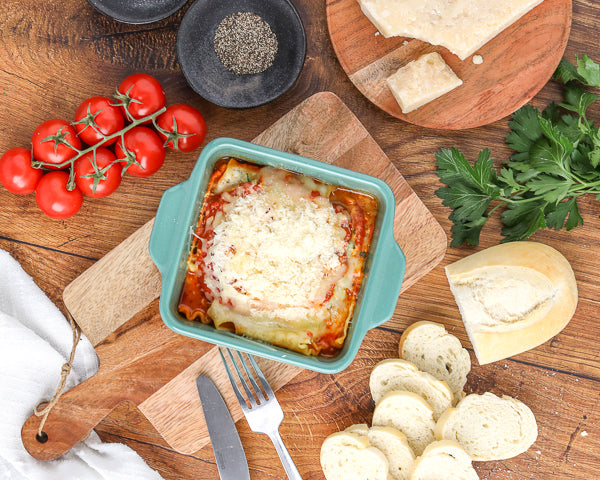



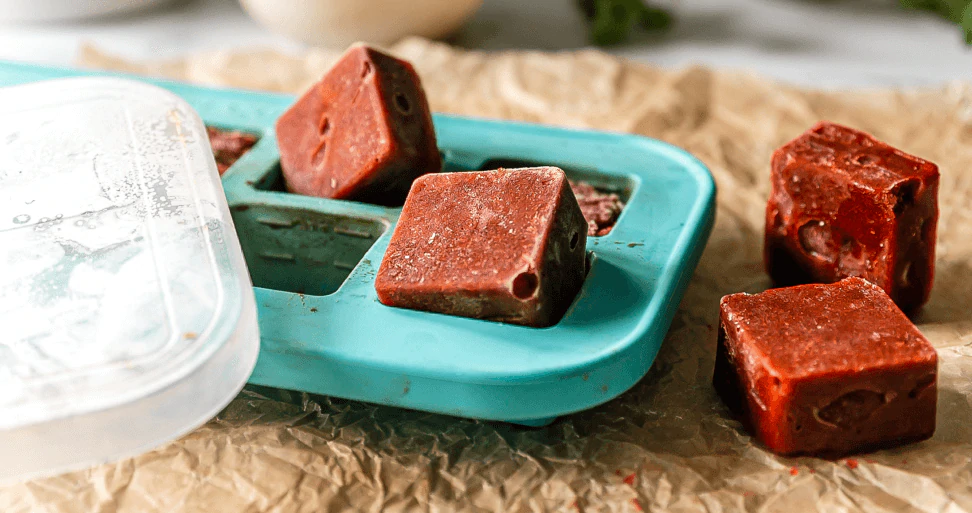

We would love to hear your ideas or better yet, post a photo of your cubes organized in our Freezer Meals & Recipes Facebook Group!